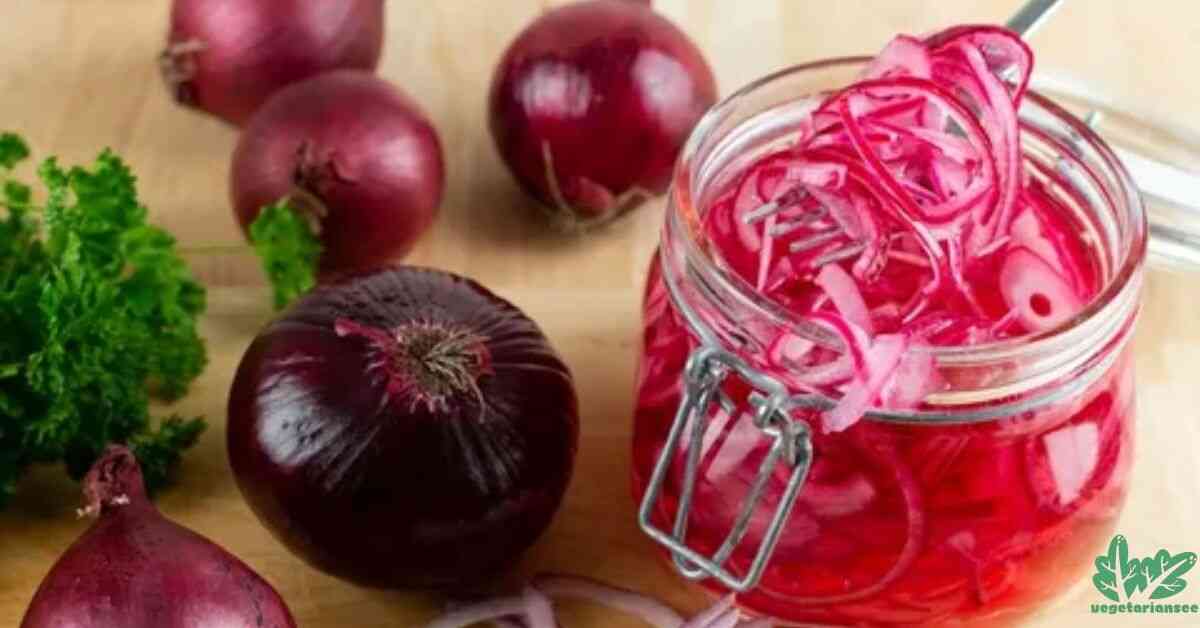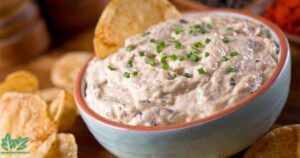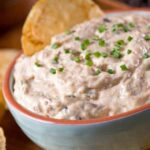Tired of bland meals that lack that special something? Missing a punch of flavor in your dishes? Sumac pickled onions are your answer.
These vibrant Middle Eastern onions transform ordinary meals into memorable experiences with their tangy, lemony kick. A simple mix of red onions, sumac spice, and a few pantry staples creates a versatile condiment that elevates everything from salads to sandwiches.
In just 30 minutes, you can prepare this traditional side dish that adds both color and complex flavor to your plate. Learn how to make these easy pickled onions and discover their endless culinary possibilities.
What is Sumac? The Star Ingredient
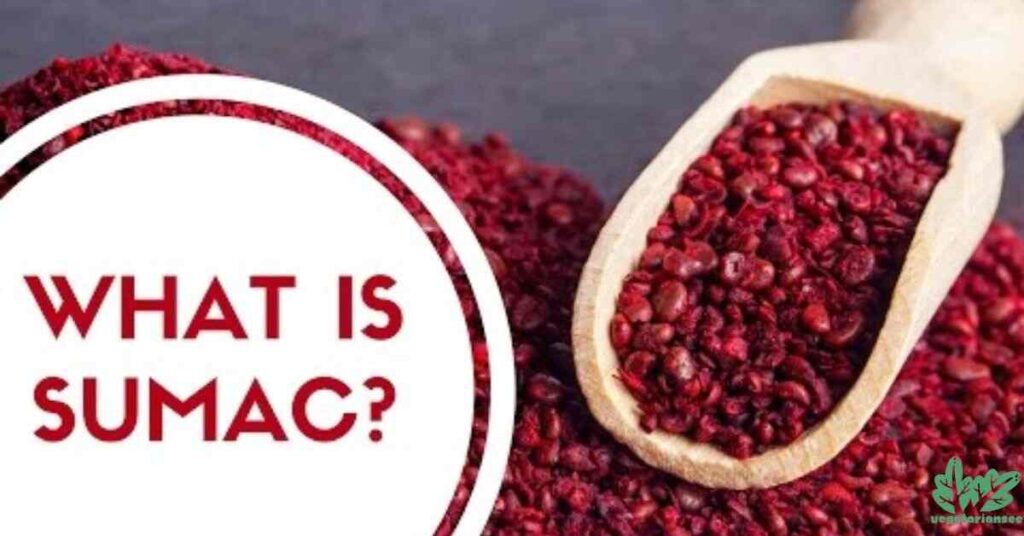
Sumac comes from a flowering plant found in the Middle East and Mediterranean regions. People have used this deep red spice for over 2,000 years in cooking. The berries are dried and ground into a powder. This powder is essential for making sumac pickled onions. Today, you can find sumac in most specialty food stores and Middle Eastern markets. Its popularity has grown worldwide since 2015, especially in modern cooking.
Understanding Sumac’s Unique Flavor Profile
Sumac has a bright, tart taste that adds zest to dishes. Think of it as nature’s citrus powder. It’s less sharp than lemon but offers a deeper, more complex tang.
When used in sumac pickled onions, it creates a perfect balance of sour and savory flavors. The taste is clean and refreshing, without being overwhelming. Many cooks prefer it over lemon juice because it doesn’t add extra moisture to dishes.
Health Benefits of Sumac
Recent studies from 2020-2023 show that sumac is packed with antioxidants. These compounds help fight inflammation in the body. The spice contains vitamins A and C, which boost immune health.
Making sumac pickled onions adds these benefits to your meals. The spice also helps with digestion and blood sugar control. Traditional healers have long used sumac for its antimicrobial properties.
Deep Dive into Sumac Pickled Onions
Sumac pickled onions blend Middle Eastern tradition with modern food preservation. The process softens raw onions while infusing them with sumac’s unique flavor. These onions turn a beautiful pink color as they pickle.
The result is a tender, flavorful condiment that keeps well in the fridge. Unlike regular pickled onions, the sumac variety offers a more complex taste profile. They’re less vinegary and more aromatic.
Flavor Profile of Sumac Pickled Onions
Sumac pickled onions offer a perfect mix of tangy and sweet flavors. The raw onion’s sharp bite mellows during pickling. You’ll taste a bright, citrusy note from the sumac. The vinegar adds tang without being too sour.
The olive oil smooths out the flavors and adds richness. These onions aren’t as harsh as regular pickled onions. They have a tender crunch and leave a pleasant, mild aftertaste.
Essential Ingredients Guide
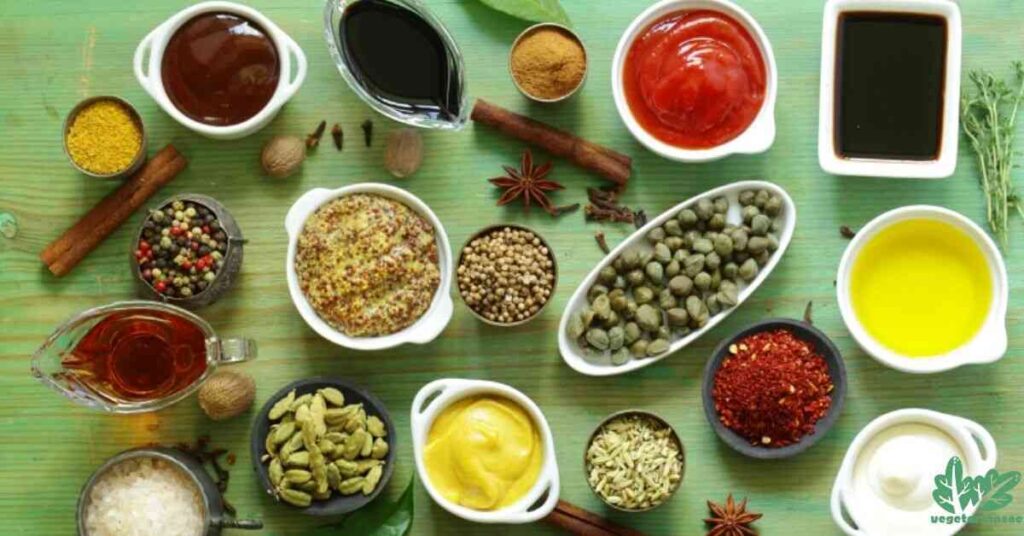
To make sumac pickled onions, you need just a few basic items. Start with fresh red onions – they work best for pickling. Get good quality sumac powder from a trusted source.
You’ll also need extra virgin olive oil and either lemon juice or red wine vinegar. Salt is important for drawing out moisture. Some recipes add fresh parsley, but it’s optional. These ingredients are now widely available in most grocery stores.
Step-by-Step Preparation Method
Making sumac pickled onions is quick and simple. First, gather all your ingredients and tools. You’ll need a sharp knife or mandolin for slicing. Get a clean glass jar for storage. The entire process takes about 5 minutes of active work.
The rest is waiting time while the onions pickle. Even beginners can make this recipe successfully on their first try.
Preparing the Onions
Start with peeling and cutting the onions into thin, even slices. Thinner slices pickle faster and taste better. If raw onions make you cry, chill them for 15 minutes before cutting.
Some cooks soak the sliced onions in hot water for 10 minutes to reduce sharpness. Pat them completely dry before moving forward. Even slicing ensures all pieces pickle at the same rate.
The Pickling Process
Mix your sliced onions with sumac and salt first. Use your hands to massage the spices into the onions for one minute. This helps release their natural juices. Add olive oil and your chosen acid (vinegar or lemon juice).
Let everything sit for at least 30 minutes. The onions will turn pink and soften. They taste even better after a few hours in the fridge.
Storage and Preservation
Sumac pickled onions stay fresh in the refrigerator for up to two weeks. Store them in an airtight glass container. Keep them submerged in their liquid for best results. The color might deepen over time – this is normal.
If you add fresh herbs, use them within four days. Always use a clean spoon to serve. Don’t leave them at room temperature for more than two hours.
Serving Suggestions and Pairings
Sumac pickled onions add life to many dishes. Put them on grilled meats or roasted vegetables. Add them to salads for extra crunch and flavor. They work great in sandwiches and wraps.
These onions make simple rice dishes more interesting. Try them with eggs at breakfast. They also enhance the taste of hummus and other dips.
Traditional Applications
In Middle Eastern cuisine, sumac pickled onions often appear alongside kebabs and grilled meats. They’re a standard part of mezze platters. Many families serve them with falafel and shawarma.
You’ll find them in traditional flatbread sandwiches. They’re also common in Turkish and Lebanese restaurants. Their use dates back many generations.
Read This Blog: How to Cook a Beef Brisket? The Ultimate Guide
Modern Uses
Today’s cooks use sumac pickled onions in creative ways. Add them to grain bowls and Buddha bowls. Top your avocado toast with them. Mix them into modern salads. They work well in fusion tacos and burritos.
Food bloggers since 2020 have popularized using them in plant-based dishes. Many food trucks now offer them as a premium topping.
Meal Inspiration
Breakfast becomes special with eggs and sumac pickled onions. Add them to lunch bowls with quinoa and roasted vegetables. Make dinner interesting by adding them to grilled fish.
They work in pasta salads and potato salads. Try them in weekend brunch dishes. Add them to cheese boards and appetizer plates.
Creative Recipe Variations
Change up your sumac pickled onions by adding different spices. Try mixing in fresh herbs like dill or mint. Some cooks add garlic or peppercorns. You can make them sweeter with a touch of honey.
Experiment with different types of onions. Each variation brings new flavors to your meals.
Spice Variations
Add red pepper flakes for a spicy kick to sumac pickled onions. Try adding whole cumin seeds or coriander. Black pepper adds extra warmth.
Some people include bay leaves or thyme. Mediterranean oregano works well too. Each spice creates a unique flavor profile. Start with small amounts and adjust to taste.
Vinegar Alternatives
Replace regular vinegar in sumac pickled onions with different acids. Fresh lemon juice gives a bright, fresh taste. Apple cider vinegar adds sweetness. Rice vinegar makes them milder.
White wine vinegar works well too. Some cooks use a mix of different acids. Each choice changes the final flavor slightly.
Troubleshooting Guide
Common issues with sumac pickled onions are easy to fix. If onions are too strong, soak them in hot water first. For onions that aren’t pink enough, add more sumac. If they’re too salty, rinse them briefly before serving.
When onions are too tough, slice them thinner next time. If they’re not flavorful enough, let them pickle longer. Soft onions usually mean they’re old – always start with fresh ones.
Also Read This Blog: The Ultimate Guide: How to Cook Frozen Ravioli Like a Pro in 2024
Alternative Uses for Sumac
Sumac works in many dishes beyond sumac pickled onions. Sprinkle it on roasted vegetables. Use it in salad dressings. Add it to marinades for meat or fish. Mix it into dips and spreads.
It’s great on grilled foods. Many chefs since 2020 use it as a finishing spice. It adds color and flavor to simple dishes.
In Other Dishes
The sumac from your sumac pickled onions recipe can flavor other foods. Add it to hummus or baba ganoush. Sprinkle it on eggs or avocado toast.
Mix it into yogurt dips. Use it on roasted potatoes. It’s great in rice dishes. Add it to soups and stews. Many modern recipes now include sumac as a key ingredient.
Non-Culinary Applications
Historically, people used sumac for more than food. Traditional medicine used it to treat various conditions. Some cultures used it for leather tanning. The plant’s leaves make natural dyes.
Modern studies since 2021 explore its potential health benefits. Some natural beauty products now include sumac extract. Its antioxidant properties interest researchers.
Pro Tips and Expert Advice
Use a mandolin for perfectly even onion slices. Choose firm, fresh red onions for best results. Let sumac pickled onions marinate overnight for fuller flavor. Keep them submerged in liquid while storing.
Use good quality sumac – color should be deep red. Don’t overcrowd the storage container. Fresh herbs should be added just before serving.
Recipe Card
Prep Time: 5 minutes Marinating Time: 30 minutes Total Time: 35 minutes Makes: 2 cups of sumac pickled onions Ingredients: 2 red onions, 1 tablespoon sumac, ¼ cup olive oil, 2 tablespoons vinegar, ½ teaspoon salt Instructions:
Slice onions thinly. Mix with sumac and salt. Add oil and vinegar. Let marinate. Store in fridge. Notes: Best after 24 hours. Keeps for 2 weeks.
Frequently Asked Question
Can I substitute sumac?
While sumac has a unique flavor, you can use lemon zest mixed with black pepper as a substitute. However, your pickled onions won’t have the same authentic taste. The distinct flavor of sumac is hard to replicate.
How long do pickled onions last?
Properly stored sumac pickled onions last up to 2 weeks in the refrigerator. Without fresh herbs, they might last even longer. Always keep them in an airtight container.
Can I make them less sharp?
Yes! Soak sliced onions in hot water for 10-15 minutes before pickling. This reduces their sharpness while maintaining crispness.
What’s the best onion to use?
Red onions work best. They’re crisp, colorful, and have the right balance of sweetness and sharpness.
How to prevent crying while cutting onions?
Chill onions for 15 minutes before cutting. Use a sharp knife and cut near running water. A mandolin slicer also helps cut quickly.
Can I make them spicy?
Yes! Add red pepper flakes, cayenne pepper, or fresh chili to your sumac pickled onions for extra heat.
Conclusion
Sumac pickled onions are more than just a condiment – they’re a gateway to elevating everyday meals. This simple preparation brings together centuries of Middle Eastern culinary wisdom with modern cooking needs.
In just 35 minutes, you can create a versatile topping that transforms ordinary dishes into memorable meals. Whether you’re an experienced cook or just starting, these pickled onions offer an easy way to add professional-level flavor to your cooking.
The combination of sumac’s unique tang and perfectly pickled onions creates a condiment that’s both traditional and timeless. Start making your own today and discover why this ancient preparation continues to enhance modern cuisine.

Ethan Henry with 8 years of expertise in bamboo, excels in sustainable design, construction and product development. His passion for eco-friendly solutions has driven innovative advancements in bamboo-based industries.
